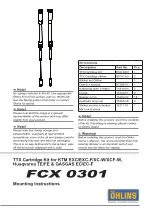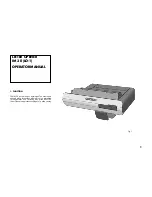
4
QUESTIONS AND ANSWERS
This section answers frequently asked questions.
There are some air bubbles in the connection, how do I remove them?
To prevent air bubbles getting trapped between the connections, it can be helpful to put
some DI water or a bit of the sample fluid in the holes of the chip before making the
connections. When the sealing rubbers are placed, excess liquid will be pressed out of the
holes. The connection will be bubble free.
There is no liquid flow.
If you are using low pressure pumps like membrane pumps, the pump may not have
sufficient power to fill the system with water. It can help to place the fluid reservoir on a
higher position, thus allowing both capillary action and gravity to help filling the system. Or
try to fill the system with DI water before switching on the pump.
Otherwise check to make sure that the channel is not obstructed by debris or the Nanoport
ferrules. The chips are clean room packed and free of debris, however there is always the
risk that somewhere between the clean room and your experiment some particles found
there way into the chip. Blocking with Nanoport ferrules is possible when the Nanoport
ferrules are used with the conical side pressed in the chip hole and the fittings are tightened
too much. Release the fittings slightly and check whether a flow is present.
The connection leaks during testing.
When the ferrules are not assembled straight onto the glass chip, there can be a leakage.
Assemble the connections again, following the instruction of this manual.
The dead volume seems to increase.
When the bottom side of the sealing rubber is damaged, it will increase the dead volume in
the connection. The area of contact between the sealing rubber and channel becomes
smaller. Check the sealing rubbers and replace them if necessary.
The chips does not fit the chip holder.
Despite the checks at Micronit it is possible that a chip is slightly larger than specified. This
is an exception. We can rework the chip to the right dimensions.
During my analysis the chip suddenly cracked, how is this possible?
The chip is made of glass, tiny cracks in glass can propagate during your tests when the glass
is stressed. If this happens, the connections are most likely too tight. Especially with thin
bottom chips this is more likely to occur.
Fluidic Connect 4515 - User Manual V1.5
13





































